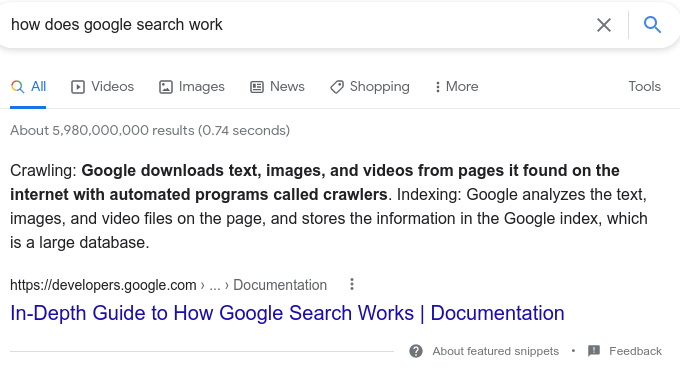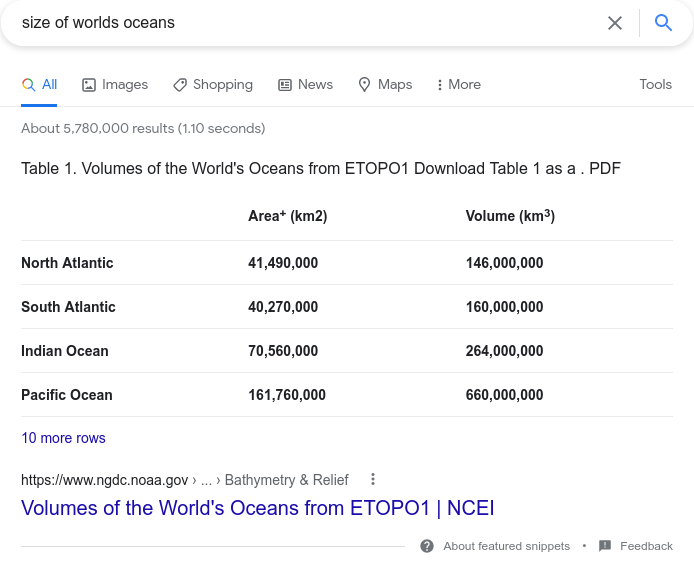How To Optimise For Featured Snippets
I'm sure you've noticed that Google’s search results sometimes show listings where the snippet describing a page comes before a link to a page. Results displayed this way are called "featured snippets." This is different to the standard Google format where you have a link, a URL (or breadcrumb) and a description.
Featured snippets may be found within Search Results, within the "People also ask" section, or along with Knowledge Graph information. Featured snippets commonly contain one listing, but more than one may appear. Common types of Featured Snippets include definitions, tables, steps and lists. Google shows the featured snippet when they believe the result they have chosen matches the searcher's intent exactly.
Most featured snippets are answers to the 5ws (who, what, where, when, why). Google's algorithms determine whether a section of a web page makes a good featured snippet to return for a specific Google search request. But you can influence this decision making process as we'll see later.
What Happens When A User Clicks On A Featured Snippet
When the user clicks on a featured snippet, they are taken directly to the page that the information was taken from. If supported, the web browser will then automatically scroll to the place on the page where the information appears.
Types Of Featured Snippets
The three main types of featured snippets that appear the most often in the search results are as follows:
1. The Paragraph Featured Snippet

Like the featured snippet displayed above, paragraph featured snippets are displayed more than any other type of featured snippet. Also known as a definition box, the best paragraph featured snippets answer the question immediately and then add extra information. This makes the searcher want to click through to your site to get these extra details. You can cover a lot of information on a single web page by using an FAQ section, or cover the question in depth by devoting a full page to it.
2. The Table Featured Snippet

When there are multiple answers to a question (such as what are the sizes of the world's oceans), this is usually presented as a table featured snippet Table snippets are quite popular for displaying information such as lists, pricing, rates or any other forms of data.
3. The List Featured Snippet

List featured snippets come in two types: ordered lists and unordered lists. These lists work really well for "best of" articles and any content that has a list of items in it.
How To Optimise For Featured Snippets
First of all, you'll need to find a search term that is relevant to your site that already has a featured snippet showing for it. By doing this you know Google wants to show a featured snippet for this term.
Secondly, work out which type of featured snippet is shown for the search term you want to optimise for.
Next, you need to optimise your content for the particular type of featured snippet, as follows:
- Paragraph Snippet: To optimise for this type of featured snippet, you need to provide a short (40-60 word) snippet of text that Google can directly use in the Featured Snippet. It also helps if you have “What is X” directly above your definition and to be objective in your answer.
- Table Snippet: Google tends to get the table snippets from actual tables on your web pages. Make sure that the HTML on your page actual includes the table, tr and td tags so that Google can find the relevant information easily.
- List Snippet: Here you need to use the correct <ul> or <ol> code for an unordered or ordered list. Each item then needs to be enclosed with an <li>. If you're using a content management system such as Wordpress then make sure you inspect the code when the page is live to ensure it has done its job properly.
How To Opt Out Of Featured Snippets
Instead of wanting to optimise for a featured snippet, you may decide that you want to opt out of featured snippets. To do this you should use the nosnippet tag to opt out of all snippets.
Although ranking for featured snippets takes a lot of research and planning, going through this process will provide you with new keyword opportunities and you'll think a lot more about how to structure your articles.

This article was written by Gaz Hall, a UK based SEO Consultant on 14th October 2021.
Gaz has 20 years experience working on SEO projects large and small, locally and globally across a range of sectors.
If you need any SEO advice or would like him to look at your next project then get in touch to arrange a free consultation.